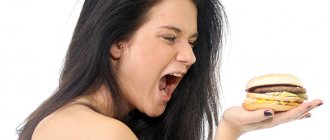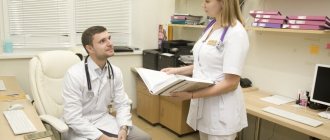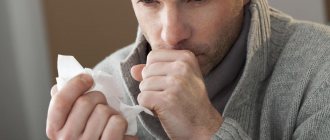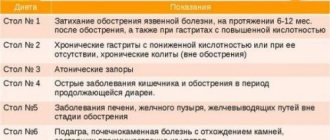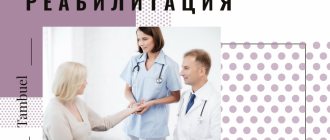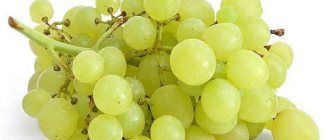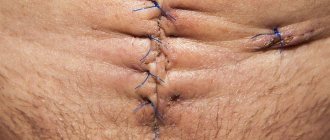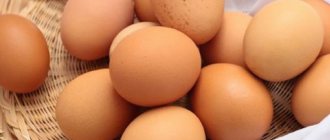Day 1 after surgery
A diet consisting of cold liquid and semi-liquid foods.
Avoid hot foods and drinks, salty, hot, sour, spicy foods, alcohol, solid foods, fruits, vegetables, containing seeds, to avoid their penetration into wounds.
Preferable foods that have anti-inflammatory properties are pineapple, plums, carrots, beets, broccoli, cauliflower and Brussels sprouts, spinach, mushrooms, red fruits.
Preparation of products It is recommended to prepare dishes in liquid or semi-liquid form, grind it to the consistency of puree, puree soup, broth, so that there are no difficulties before eating and swallowing it.
Reviews and results
Dietary nutrition after surgery is an essential component for achieving the effectiveness of treatment and the rehabilitation process. The course of the postoperative period and recovery time largely depend on the correct organization of dietary nutrition/its adherence. Reviews from most patients emphasize the great importance of therapeutic nutrition in the postoperative period.
- “... He underwent surgery for resection of part of the stomach after gastric bleeding during an exacerbation of peptic ulcer disease. After the operation, I was fasted for a day, and then they started feeding me little by little. After 12 days I was transferred to Table No. 1, where I am still at now. I try not to break my diet, I quit smoking and drinking alcohol. As the doctor told me: now the diet is your doctor and your health depends on your attitude to your diet”;
- “...I switched to strict medical nutrition immediately after the removal of the gallbladder. Due to work and insufficient time to prepare dietary meals, I tried to expand it several times, however, I felt worse and returned to the diet again. The doctor said that I would be able to switch to a general diet no sooner than in 6-8 months, but even in this case certain dietary restrictions would be necessary”;
- “...I had a planned operation to stent the heart vessels. The operation went without complications. In the postoperative period, they prescribed medications and an anti-cholesterol diet, which, according to the doctors, I need to follow for life. I have been on a diet for almost a year now, and my cholesterol has returned to normal. I don’t feel any particular inconvenience, since in principle this is a healthy diet and includes a lot of products. Moreover, I have lost weight and feel much better.”
Day 2 after surgery
Liquid and semi-liquid diet at room temperature Dietary recommendations are the same as for the first 24 hours, but you now need to eat foods at room temperature.
Days 3, 4, 5 after surgery
Semi-solid diet
Exclude salty, sour, hot, spicy foods, fruits and vegetables containing seeds, and alcohol. Products with anti-inflammatory properties are preferred.
Preparation of products Semi-solid products require more demanding dental preparation. You need to dilute the food with vegetable broth until it has the consistency of a lazy and non-sticky puree.
Yogurt, milk, cookies dissolved in milk or yogurt, meat and fish puree, stewed and chopped meat and fish, possibly slightly diluted with broth, soft-boiled eggs, creamy cheeses and cottage cheese, mashed potatoes, pureed vegetable and legume soups, all complement protein energy supplements between main meals.
Until the end of 4 weeks after surgery
Soft-hard diet rich in calcium and vitamin D
Preparation of foods After the sutures are removed, the diet becomes soft-hard, foods at this stage require oral preparation and chewing, even if not crisp. There will no longer be a need to chop and grind food into puree; it will be enough to use a fork so that the food can be easily kneaded and broken into pieces.
Small and well-cooked pasta, tender porridge (semolina, oatmeal, finely ground), cookies; soft, lean, finely chopped meat; boiled vegetables, chopped fish, cutlets, soups and puree soups; pitted and peeled fruits, chopped or mashed with a fork if necessary, mashed potatoes, legumes and other vegetables, soft cottage cheese, omelettes, possibly with vegetables.
Avoid whole foods, vegetables, too high in fiber, salty foods and all solid foods
From 4 to 8 weeks
Strict restricted diet rich in calcium and vitamin D
Preparing food The indications for nutrition and food preparation are still the same, but food can be consumed in solid form. Excessive chewing loads should be avoided - eating hard bread, sandwiches, hard raw vegetables, dried fruits. Preferably foods rich in calcium and vitamin D.
From 13 weeks
Diet without restrictions.
Fully or partially limited products
The diet of patients after surgery in most cases includes exclusion from the diet:
- Fresh bread, bakery/confectionery products, products made from any type of dough, pastries.
- Strong/concentrated broths based on meat/fish.
- Dishes made from fatty red meat/fish, products based on them (smoked meats, canned food, sausages).
- Fried foods, raw vegetables/fruits, mushrooms, solid animal/cooking fats, pickles, full-fat cottage cheese, various snacks, cheese, sour cream, seasonings, sauces and spices.
- Carbonated drinks, strong tea/coffee, alcohol-containing drinks.
Table of prohibited products
| Proteins, g | Fats, g | Carbohydrates, g | Calories, kcal | |
Vegetables and greens | ||||
| vegetables | 2,5 | 0,3 | 7,0 | 35 |
| vegetables legumes | 9,1 | 1,6 | 27,0 | 168 |
| swede | 1,2 | 0,1 | 7,7 | 37 |
| cabbage | 1,8 | 0,1 | 4,7 | 27 |
| green onion | 1,3 | 0,0 | 4,6 | 19 |
| bulb onions | 1,4 | 0,0 | 10,4 | 41 |
| white radish | 1,4 | 0,0 | 4,1 | 21 |
| horseradish | 3,2 | 0,4 | 10,5 | 56 |
| spinach | 2,9 | 0,3 | 2,0 | 22 |
| sorrel | 1,5 | 0,3 | 2,9 | 19 |
Mushrooms | ||||
| mushrooms | 3,5 | 2,0 | 2,5 | 30 |
Cereals and porridges | ||||
| corn grits | 8,3 | 1,2 | 75,0 | 337 |
| pearl barley | 9,3 | 1,1 | 73,7 | 320 |
| millet cereal | 11,5 | 3,3 | 69,3 | 348 |
| barley grits | 10,4 | 1,3 | 66,3 | 324 |
Flour and pasta | ||||
| pasta | 10,4 | 1,1 | 69,7 | 337 |
Bakery products | ||||
| bagels | 16,0 | 1,0 | 70,0 | 336 |
| wheat bread | 8,1 | 1,0 | 48,8 | 242 |
Confectionery | ||||
| jam | 0,3 | 0,2 | 63,0 | 263 |
| candies | 4,3 | 19,8 | 67,5 | 453 |
| pastry cream | 0,2 | 26,0 | 16,5 | 300 |
Ice cream | ||||
| ice cream | 3,7 | 6,9 | 22,1 | 189 |
Cakes | ||||
| cake | 4,4 | 23,4 | 45,2 | 407 |
Chocolate | ||||
| chocolate | 5,4 | 35,3 | 56,5 | 544 |
Raw materials and seasonings | ||||
| mustard | 5,7 | 6,4 | 22,0 | 162 |
| ginger | 1,8 | 0,8 | 15,8 | 80 |
| ketchup | 1,8 | 1,0 | 22,2 | 93 |
| mayonnaise | 2,4 | 67,0 | 3,9 | 627 |
| ground black pepper | 10,4 | 3,3 | 38,7 | 251 |
| chilli | 2,0 | 0,2 | 9,5 | 40 |
Dairy | ||||
| sour cream | 2,8 | 20,0 | 3,2 | 206 |
Meat products | ||||
| pork | 16,0 | 21,6 | 0,0 | 259 |
| salo | 2,4 | 89,0 | 0,0 | 797 |
Sausages | ||||
| dry-cured sausage | 24,1 | 38,3 | 1,0 | 455 |
| sausages | 12,3 | 25,3 | 0,0 | 277 |
Bird | ||||
| smoked chicken | 27,5 | 8,2 | 0,0 | 184 |
| duck | 16,5 | 61,2 | 0,0 | 346 |
| smoked duck | 19,0 | 28,4 | 0,0 | 337 |
| goose | 16,1 | 33,3 | 0,0 | 364 |
Fish and seafood | ||||
| dried fish | 17,5 | 4,6 | 0,0 | 139 |
| smoked fish | 26,8 | 9,9 | 0,0 | 196 |
| canned fish | 17,5 | 2,0 | 0,0 | 88 |
Oils and fats | ||||
| creamy margarine | 0,5 | 82,0 | 0,0 | 745 |
| animal fat | 0,0 | 99,7 | 0,0 | 897 |
| cooking fat | 0,0 | 99,7 | 0,0 | 897 |
Alcoholic drinks | ||||
| white dessert wine 16% | 0,5 | 0,0 | 16,0 | 153 |
| vodka | 0,0 | 0,0 | 0,1 | 235 |
| cognac | 0,0 | 0,0 | 0,1 | 239 |
| beer | 0,3 | 0,0 | 4,6 | 42 |
Non-alcoholic drinks | ||||
| cola | 0,0 | 0,0 | 10,4 | 42 |
| sprite | 0,1 | 0,0 | 7,0 | 29 |
| tonic | 0,0 | 0,0 | 8,3 | 34 |
| black tea | 20,0 | 5,1 | 6,9 | 152 |
| energy drink | 0,0 | 0,0 | 11,3 | 45 |
| * data is per 100 g of product | ||||
Treatment methods
At Global Clinic, two methods are used to treat anal fissure: conservative (medication) and operative (surgical intervention). The method of treatment is selected individually and depends on some features of the course of the disease:
- An acute fissure, which exists in most cases for less than 3 weeks, is treated with medications, ointments and blockades.
- If there is a chronic form of the pathology or if conservative treatment is ineffective, Global Clinic specialists recommend anal fissure surgery using the following methods:
- excision of the defect “acutely”, which involves two options: simple excision and one-step excision of the anal fissure with sphincterotomy;
- bloodless method - excision of the anal fissure using the radio wave method and laser surgery.
The bloodless method has a number of undeniable advantages:
- there is practically no postoperative swelling;
- fast recovery;
- The operation is performed under local anesthesia.
Global Clinic specialists use new generation devices - the IPG laser generator and the ForceTriad high-energy unit, which minimizes the risk of damage to healthy tissue.
What diseases can cause removal of the uterus
For normal functioning of the uterus, a woman must have hormonal balance. After the removal of an organ, a woman’s metabolic processes in the body are disrupted, and the main thing during this period is to normalize them, restore hormonal levels and increase the ability to recover so that the sutures heal as quickly as possible.
There are many reasons why a woman may have an organ removed:
- oncology;
- myoma;
- endometriosis;
- pelvic inflammatory diseases.
In any of these cases, diet becomes a “lifeline” for quick and high-quality restoration of the female body. Serious interference with the reproductive system has a negative impact on physical and emotional health. Therefore, a woman needs to survive this condition more gently, replenishing her diet with the necessary elements to improve her overall health.
Rehabilitation period after laparoscopy of ovarian cyst
The period after laparoscopy of an ovarian cyst is approximately one month, after which the woman can completely return to her normal lifestyle. It is believed that the key to successful rehabilitation lies in strict adherence to all advice and recommendations given by the attending physician. The golden rule for successful recovery of a woman’s body after laparoscopy is:
- Limitation of physical activity;
- Temporary refusal to play sports;
- Temporary restriction of sexual activity;
- Temporary refusal to wear tight underwear made of synthetic materials;
- Refusal to visit a sauna, bathhouse, public swimming pool, solarium;
- Refusal to take hot baths;
- Do not sunbathe in direct sunlight.
Why do you need a diet after hysterectomy?
Immediately after removal of the uterus, the female body loses one of the most necessary organs to ensure normal functioning, so the first days will be quite difficult. The more manipulations were performed during the operation, the more painful the woman will feel.
To facilitate the body’s task, the patient needs to create favorable conditions, namely not to burden the body with heavy food and a lot of movement. But today we will talk about diet, since it plays a key role.
Immediately after the operation, the most difficult days begin; they should be as gentle as possible for the body. Additionally, there should be a large amount of drinking water to speed up metabolic processes in the body, and it is also recommended to eat only unsalted food.
It is considered a mandatory procedure so that the body does not remain without the amount of water necessary for restoration during this period. A lack of fluid will slow down all processes, weaken the surgical intervention, and the woman will take longer to recover.
What is strictly forbidden to eat
The list of prohibited products is quite lengthy. It includes all food products that can additionally burden the body, because the main forces should go into speedy healing of the sutures.
| Prohibited Products | |
| Bread | Rolls, bread, pies and any other baked goods |
| Dairy products | Milk, kefir, cheese, yogurt. You can’t even eat completely low-fat foods. |
| Vegetables | Tomatoes, cucumbers, zucchini, onions, dill, radishes, potatoes, corn, garlic, cabbage, lettuce, eggplant, basil, peas, asparagus, etc. |
| Sauces | Mayonnaise, tartar, remoulade, meuniere, salsa, pesto, bolognese, satsebeli, tkemali, horseradish, chili, adjika, tabasco, barbecue, chocolate, fruit, vanilla, caramel, ketchup, soy, guacamole, bechamel, thousand islands, etc. . |
| Beverages | Juices, cola, cocoa, coffee, alcohol and any other carbonated drinks |
| Sweet | Sugar, honey, cream, meringue, jam, jam, marmalade, jelly, marshmallows, sweets, toffee, caramel, lollipops, that is, any products with a large or minor addition of sugar |
| Semi-finished products | Frozen cutlets, dumplings, semi-finished fish products, etc. |
Additionally, the use of all types of seasonings that can cause stomach irritation is prohibited. Do not fry or eat smoked foods. Anything that must be heat treated can only be boiled or cooked in a steam bath. It is possible to bake or stew with a minimum amount of oil, or best without it at all.
What is allowed to drink
The drinking regime after tooth extraction should also be gentle. The reasons for this are similar to dietary restrictions. The liquid washes out the hole, making room for bacteria and inflammation, and also brings additional pain while drinking. But water is very important for recuperation, so within a couple of hours after leaving the dentist you can take a few sips of cool water.
In the first days after surgery, you are allowed to drink warm (not hot!) tea, coffee, non-sour compote, juice, and plain water. It is recommended to abstain from carbonated drinks and concentrated juices and fruit drinks for several days. You need to drink in small sips directly from the glass. Some do this through a straw to prevent fluid from getting into the wound. But this is wrong, because during retraction, additional jaw movements are made, which can open the wound and cause pain.
You should also not rinse your mouth while drinking, especially on the first day after tooth extraction. This can be done with special herbal antiseptic solutions, carefully and carefully. But recommendations regarding rinsing should be given by a doctor; in some cases they are strictly contraindicated.

